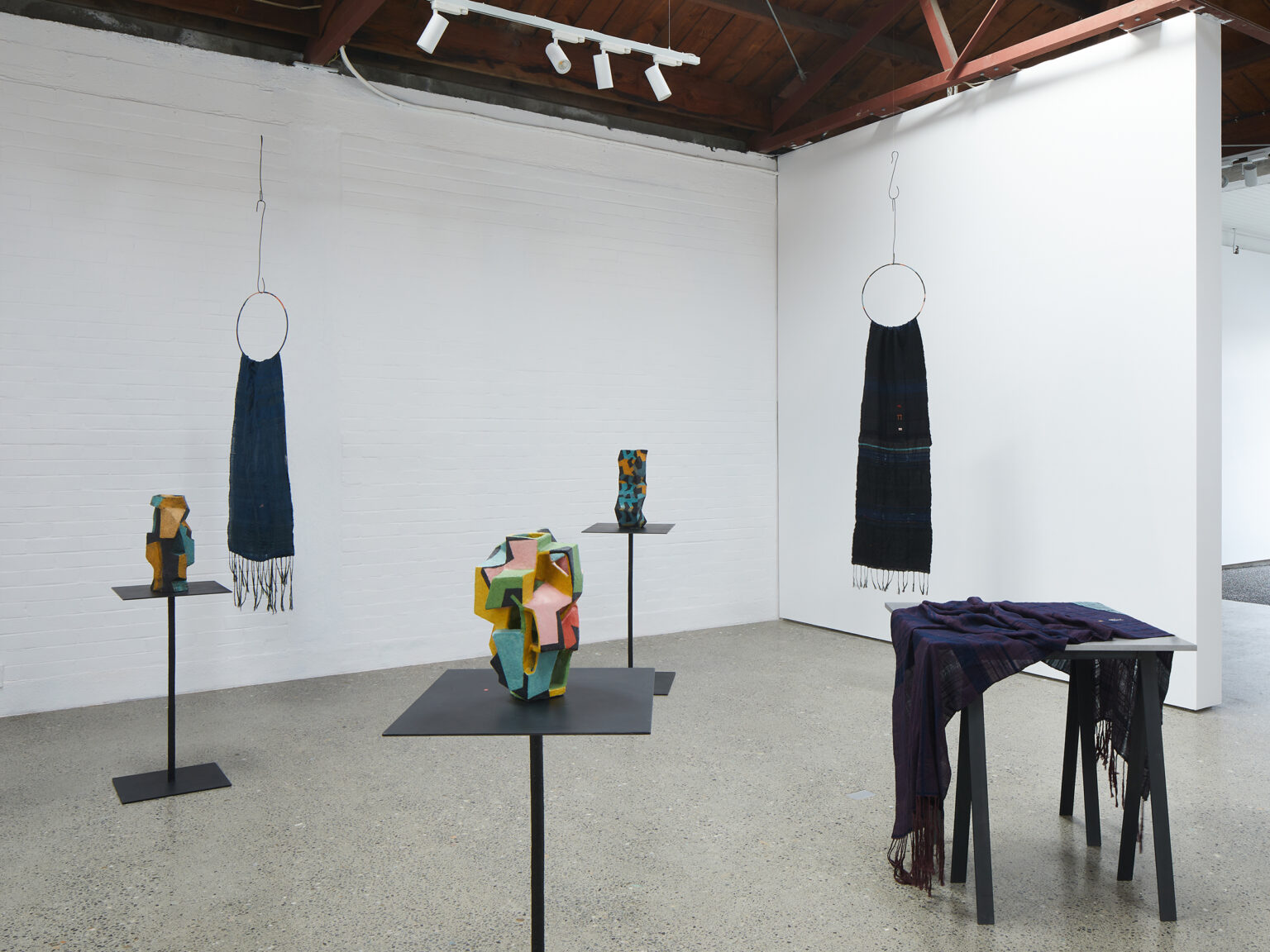

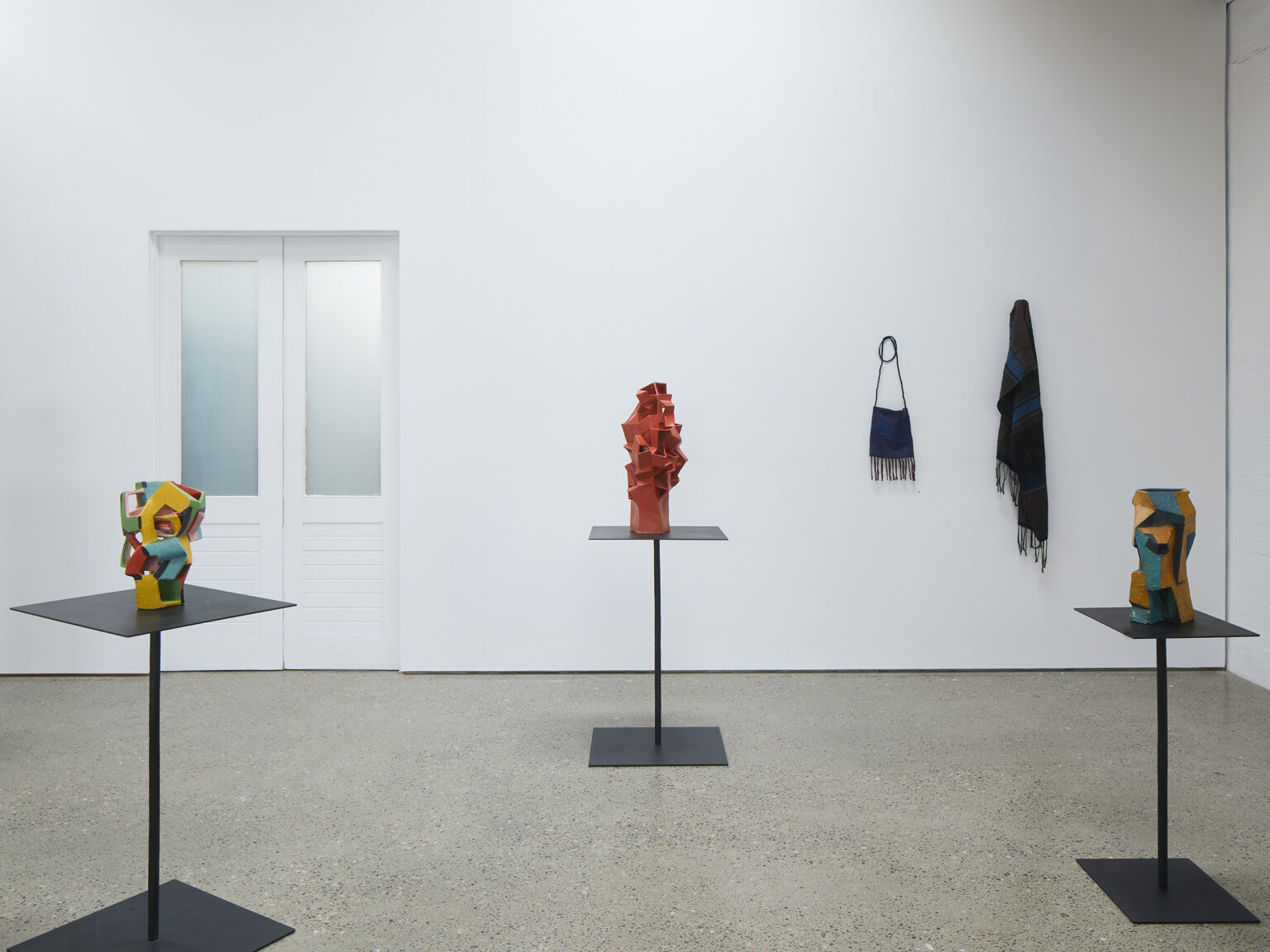
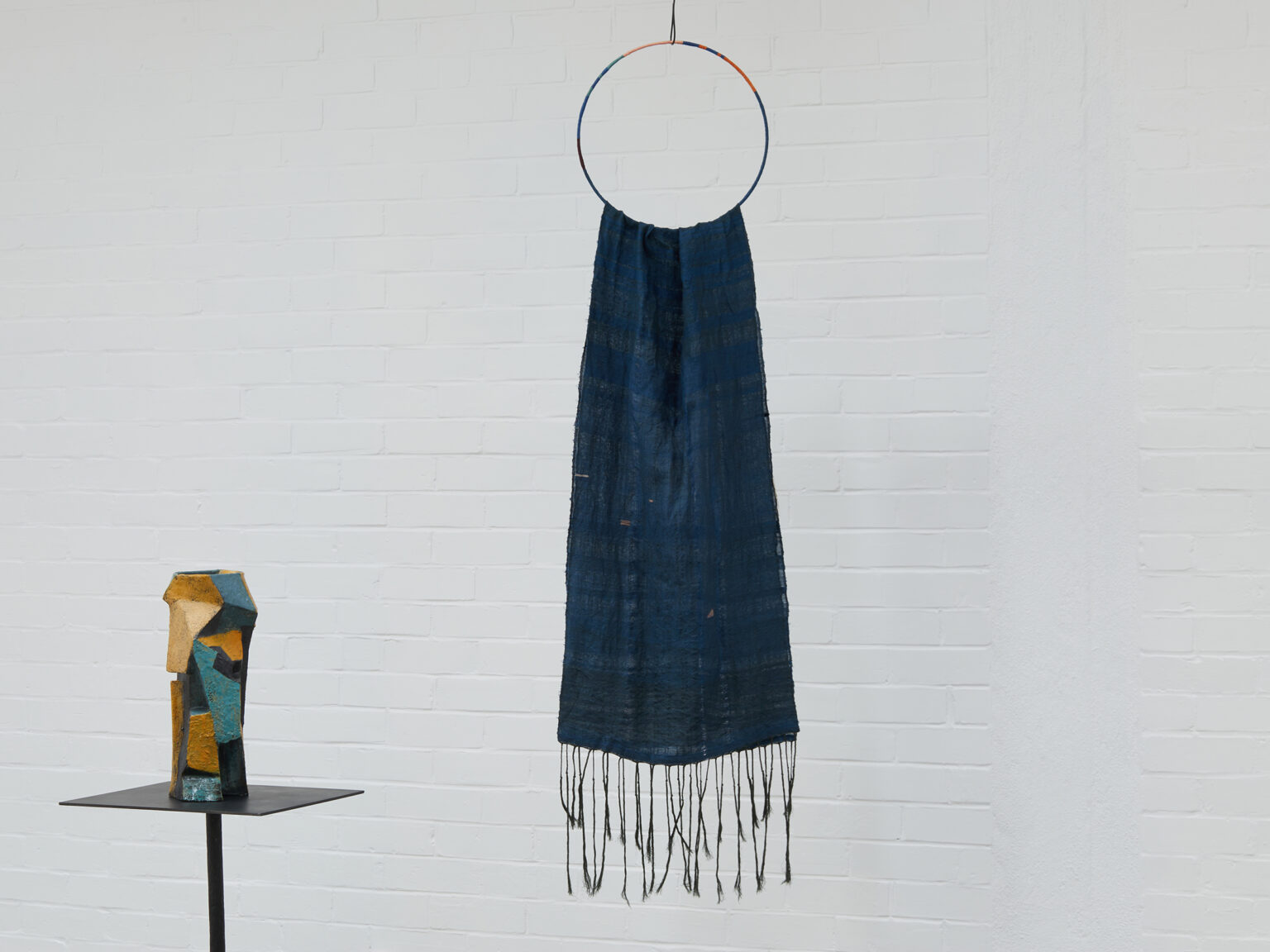
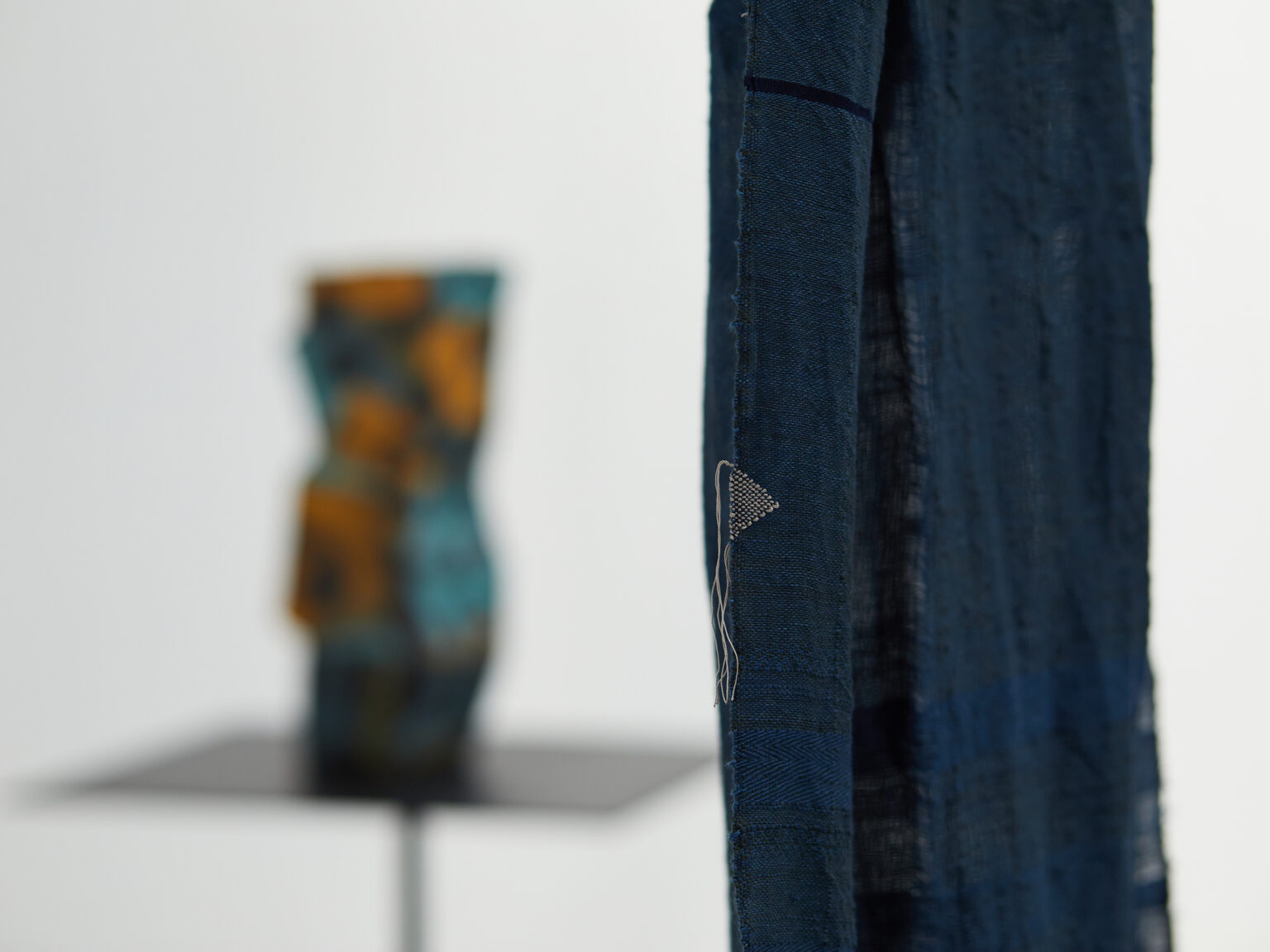
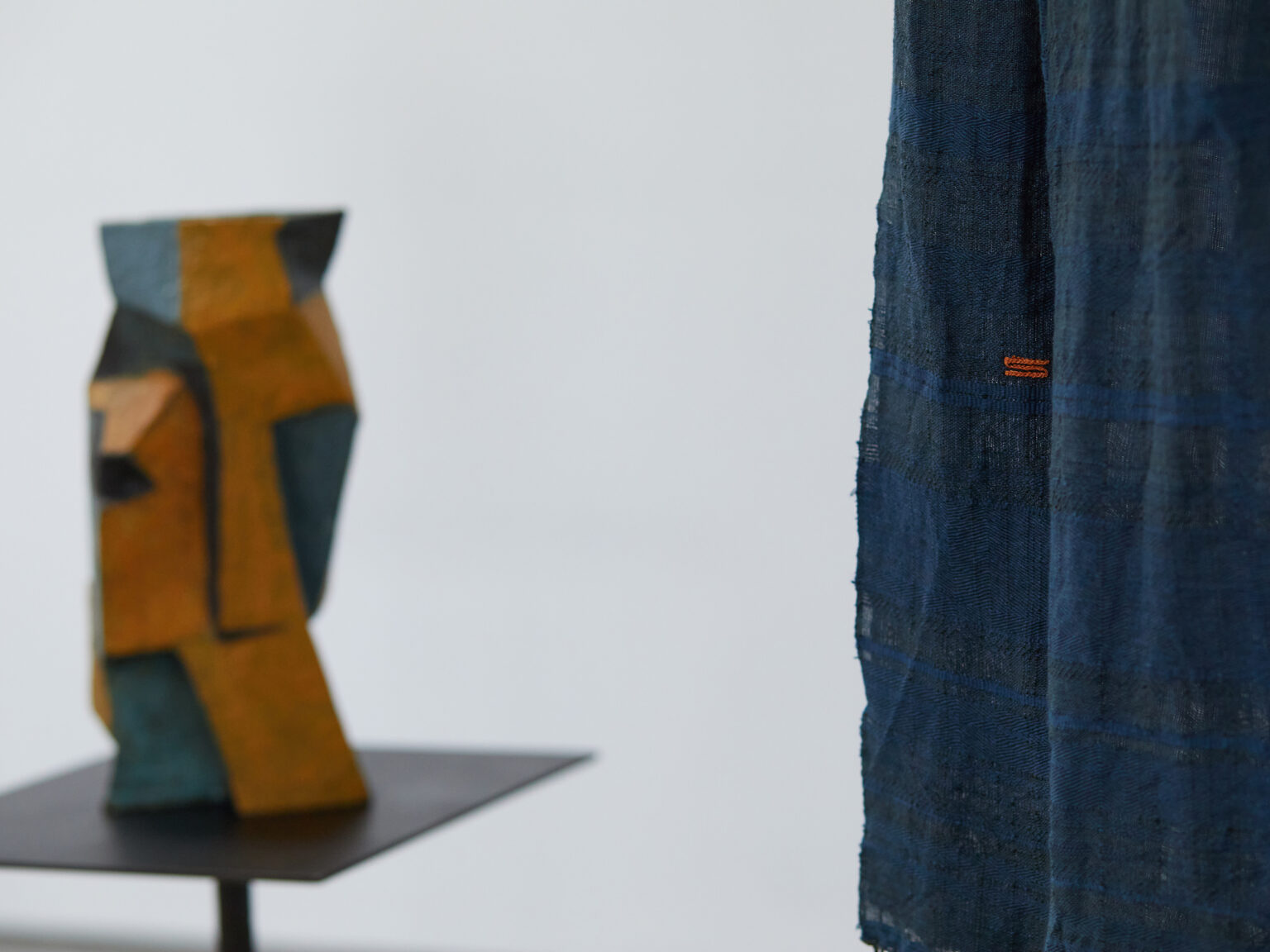
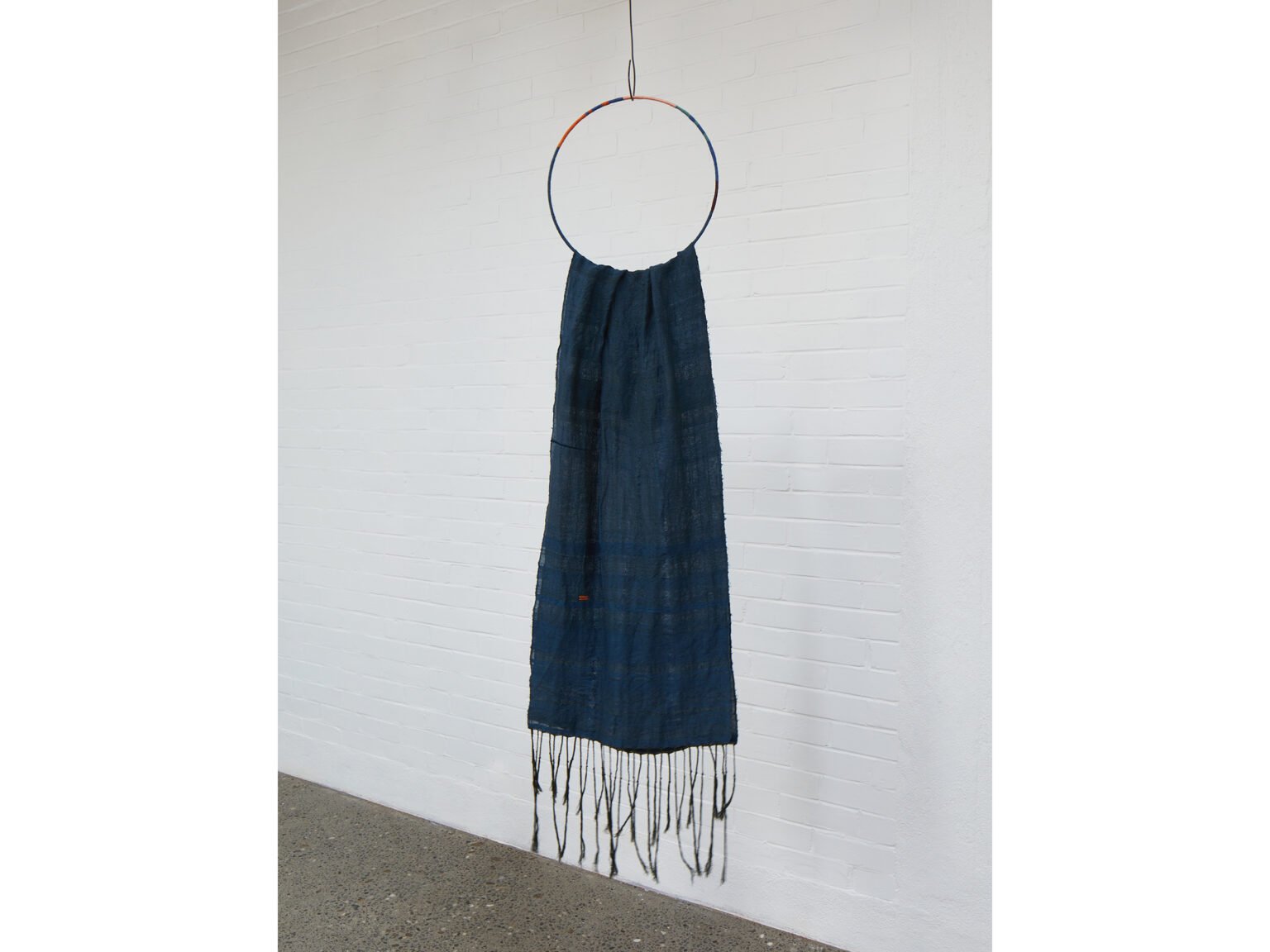
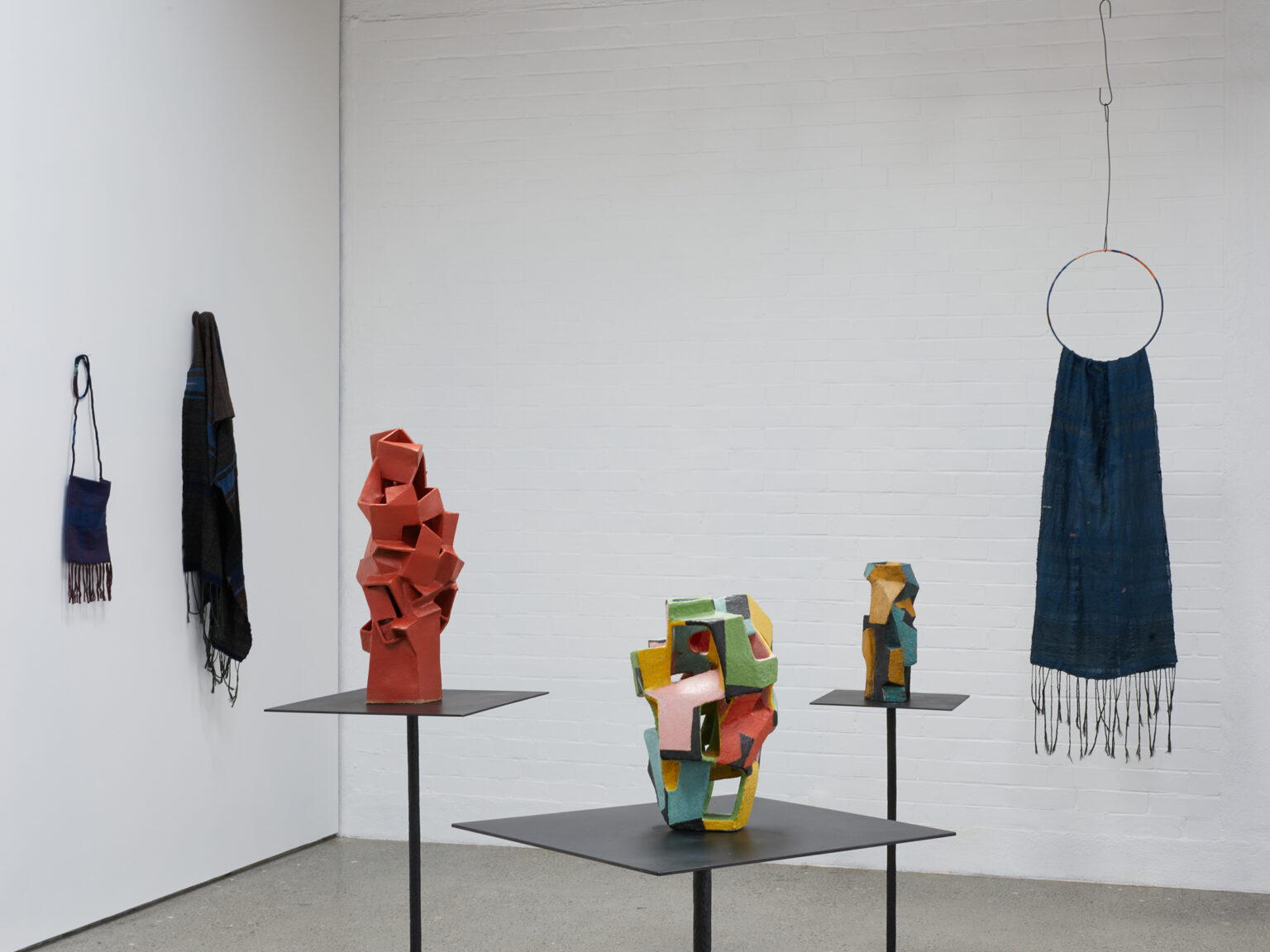
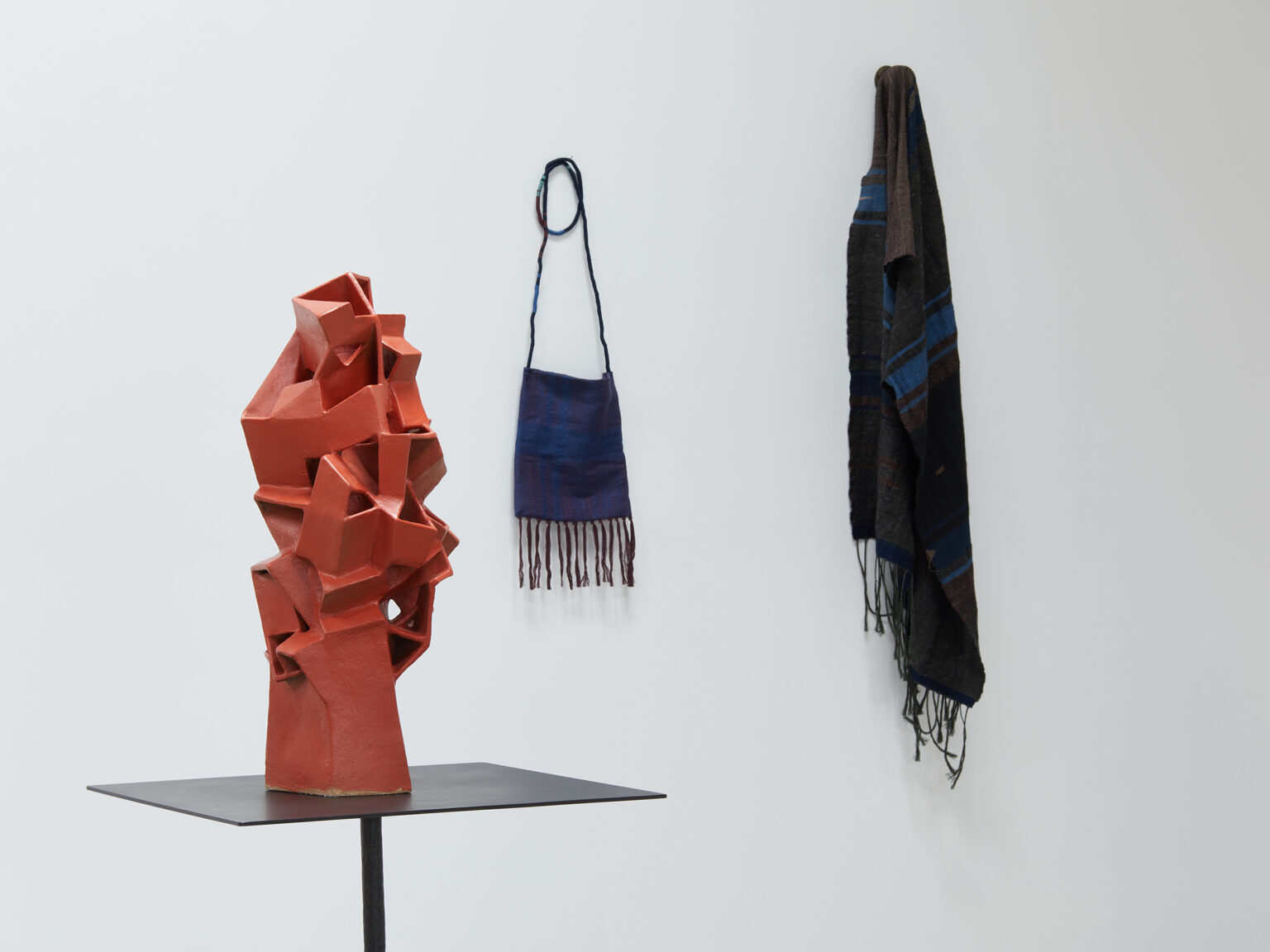
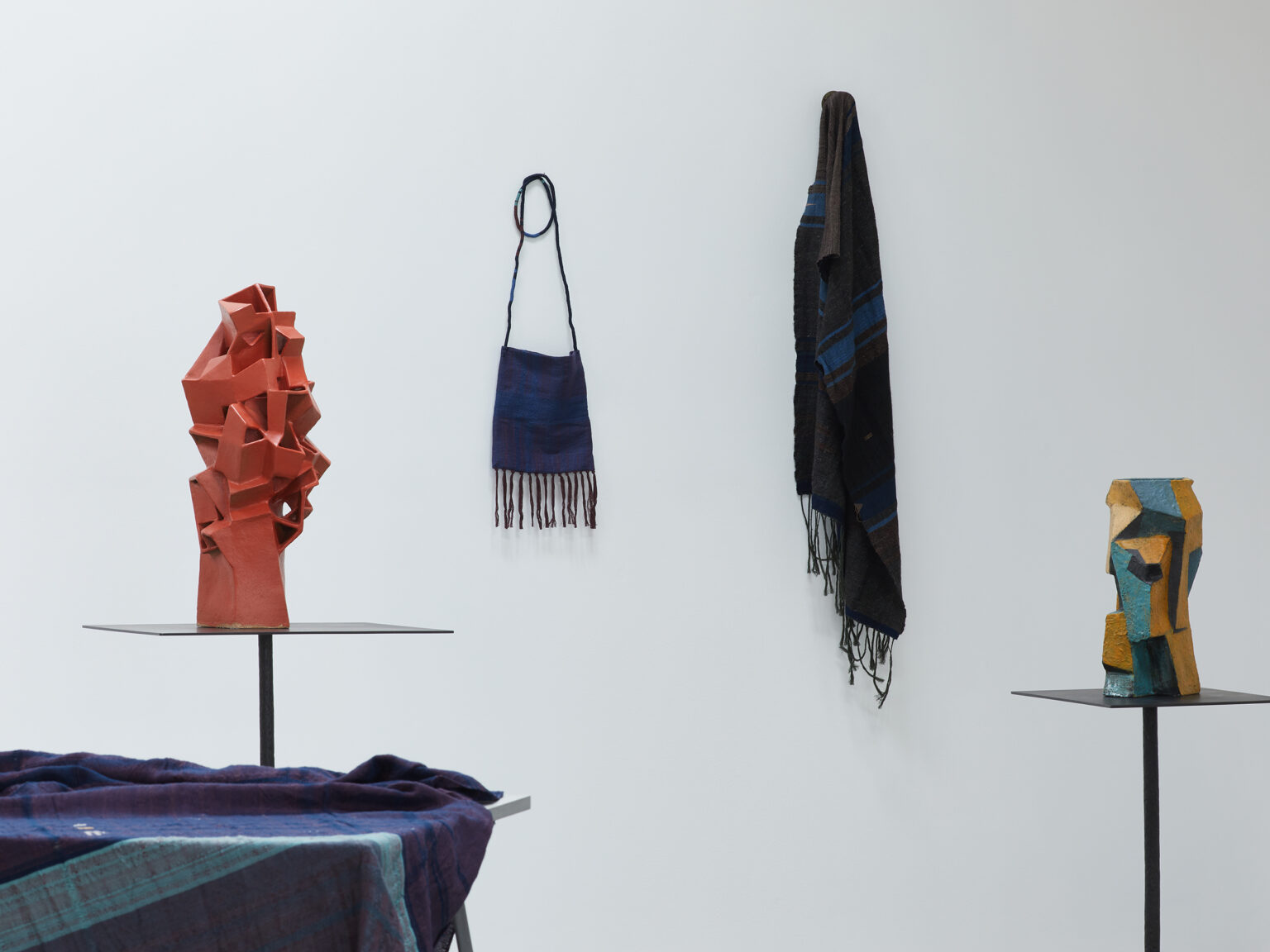
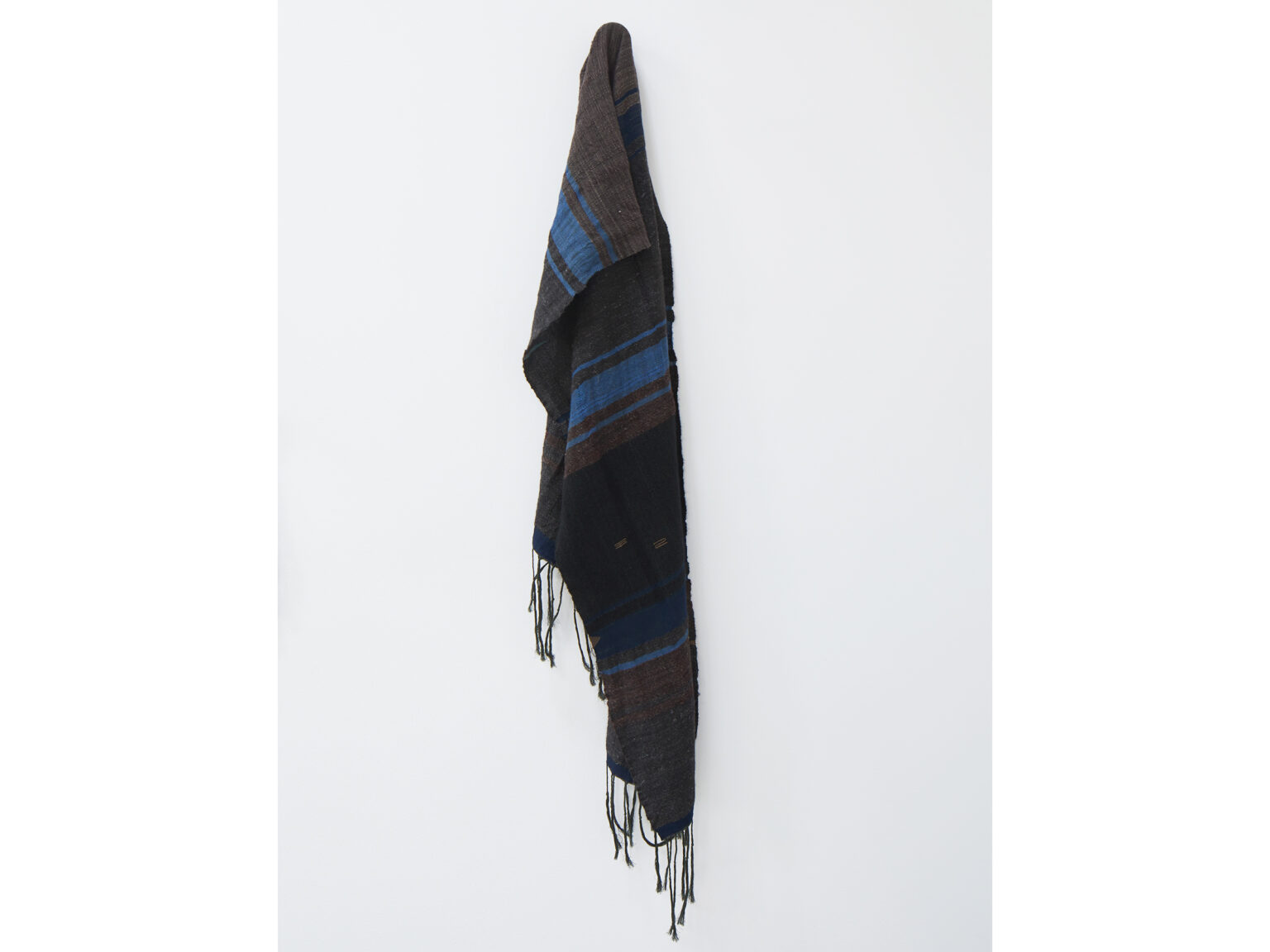
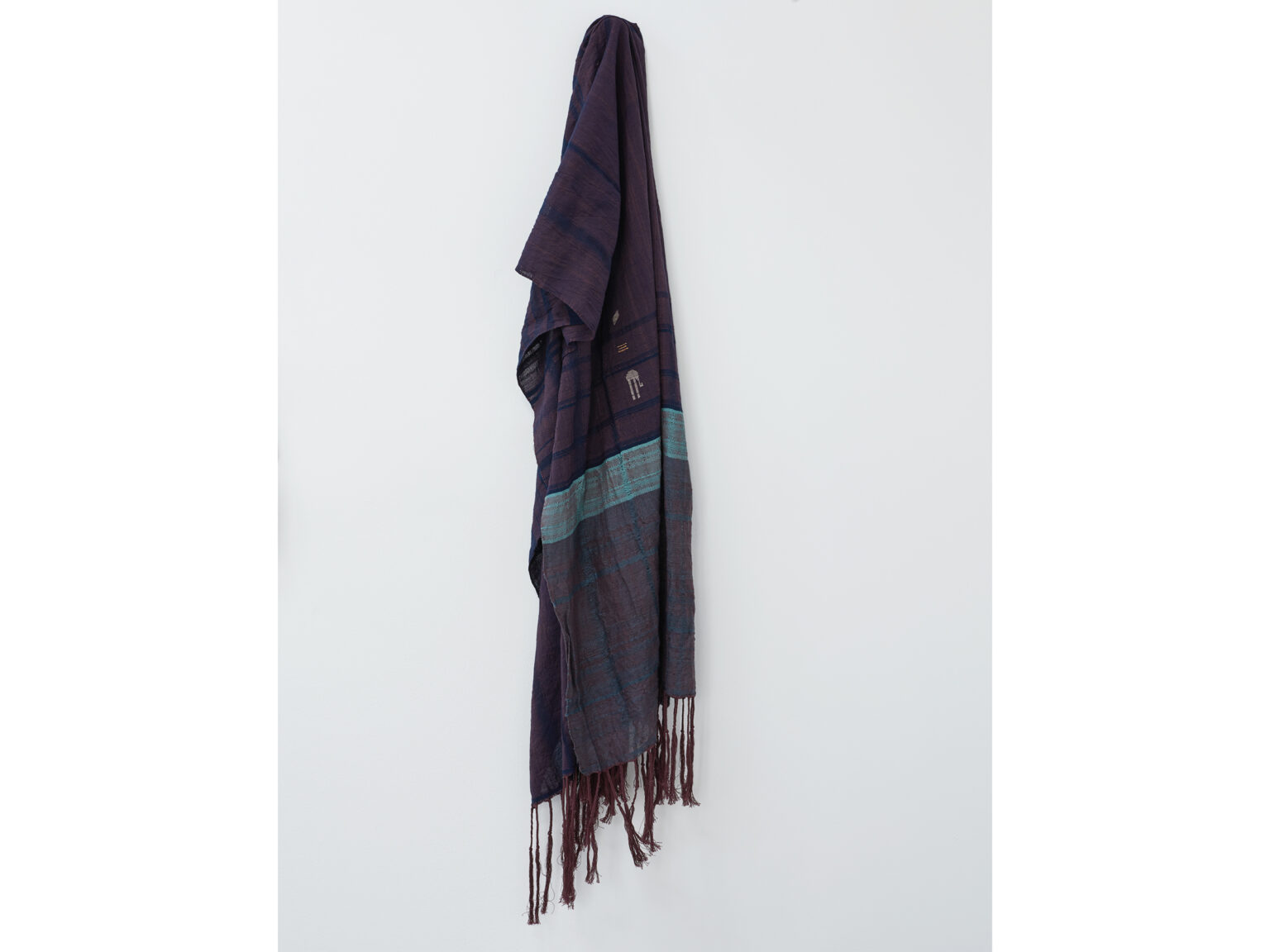
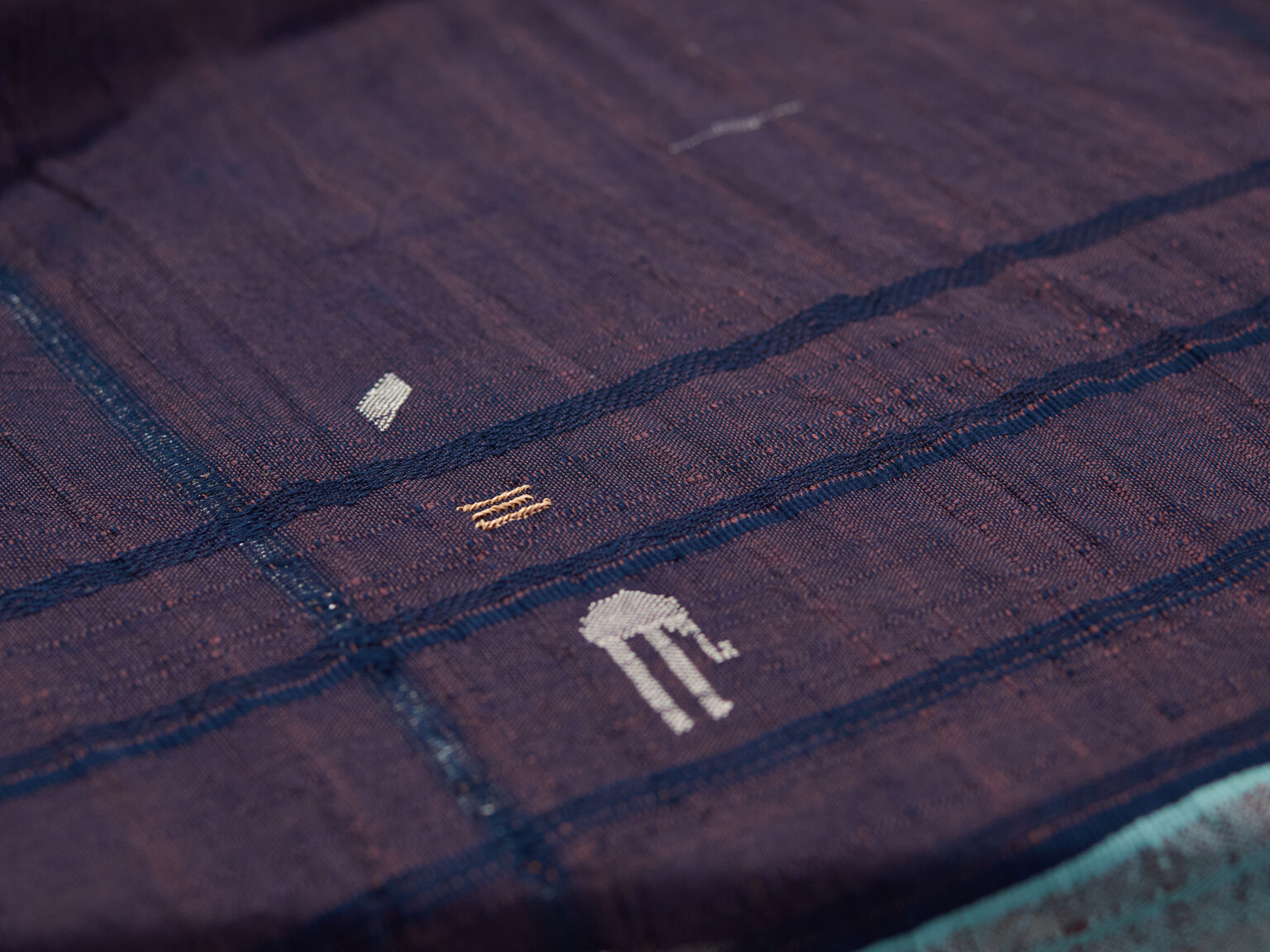
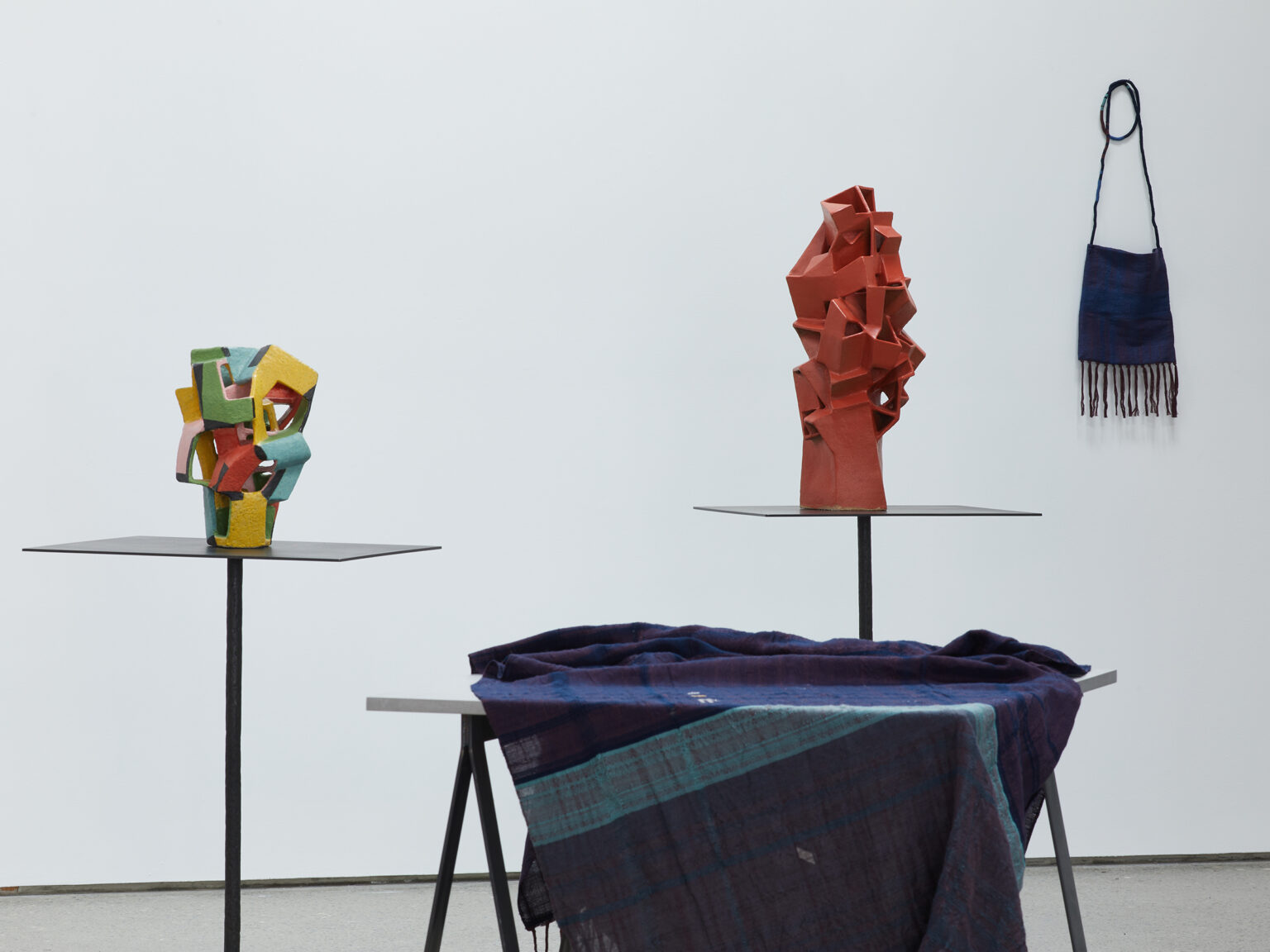
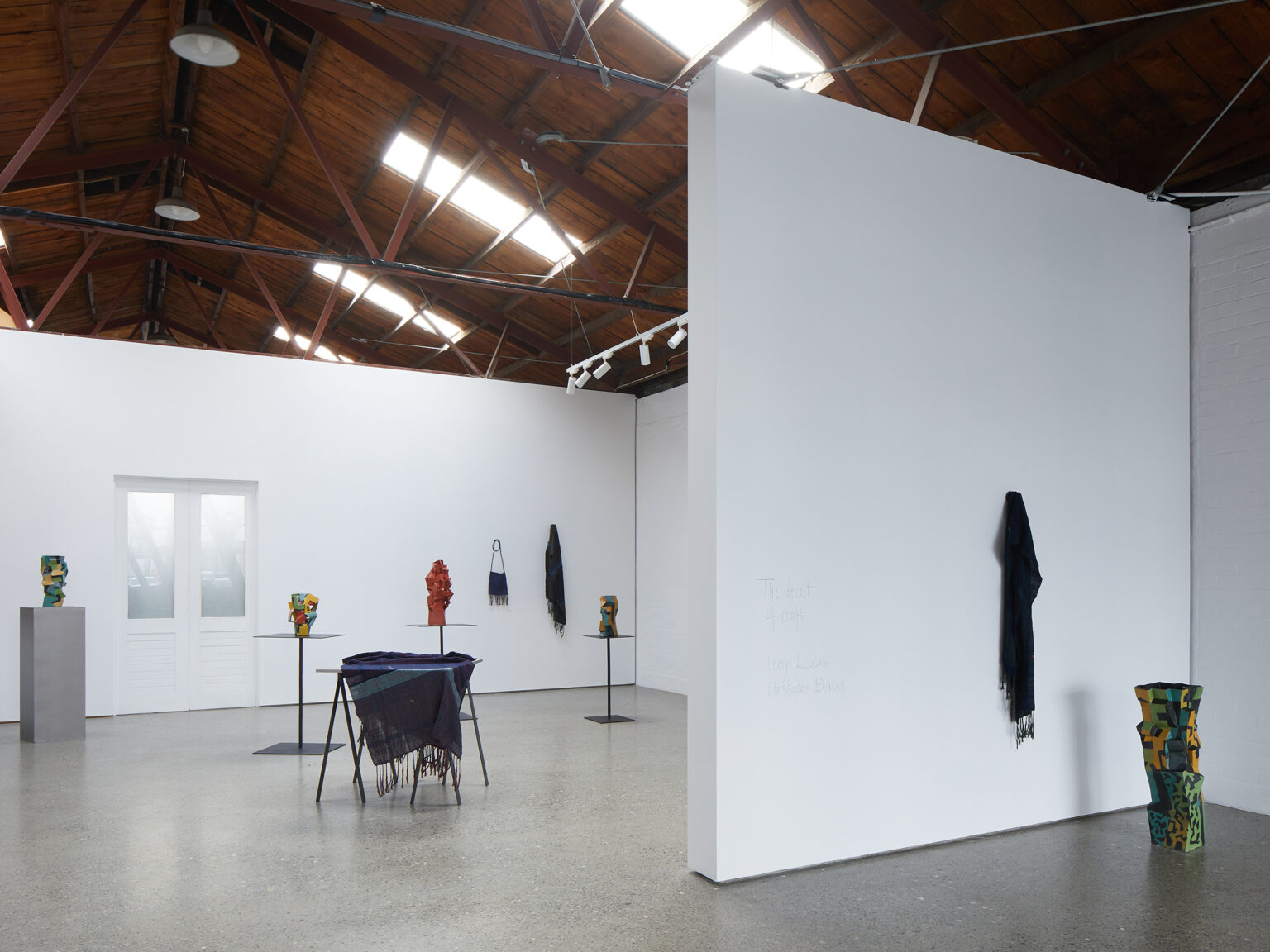
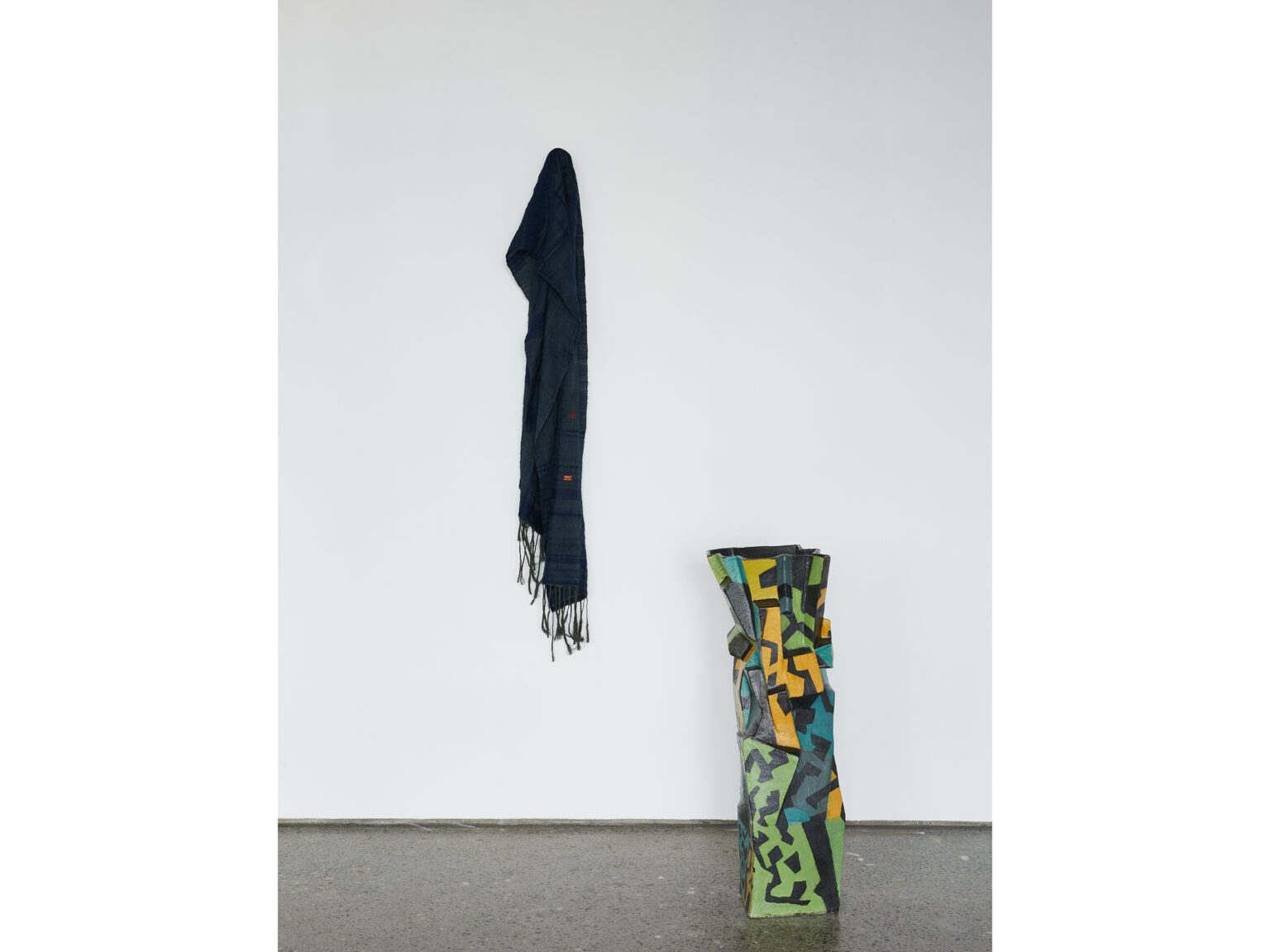
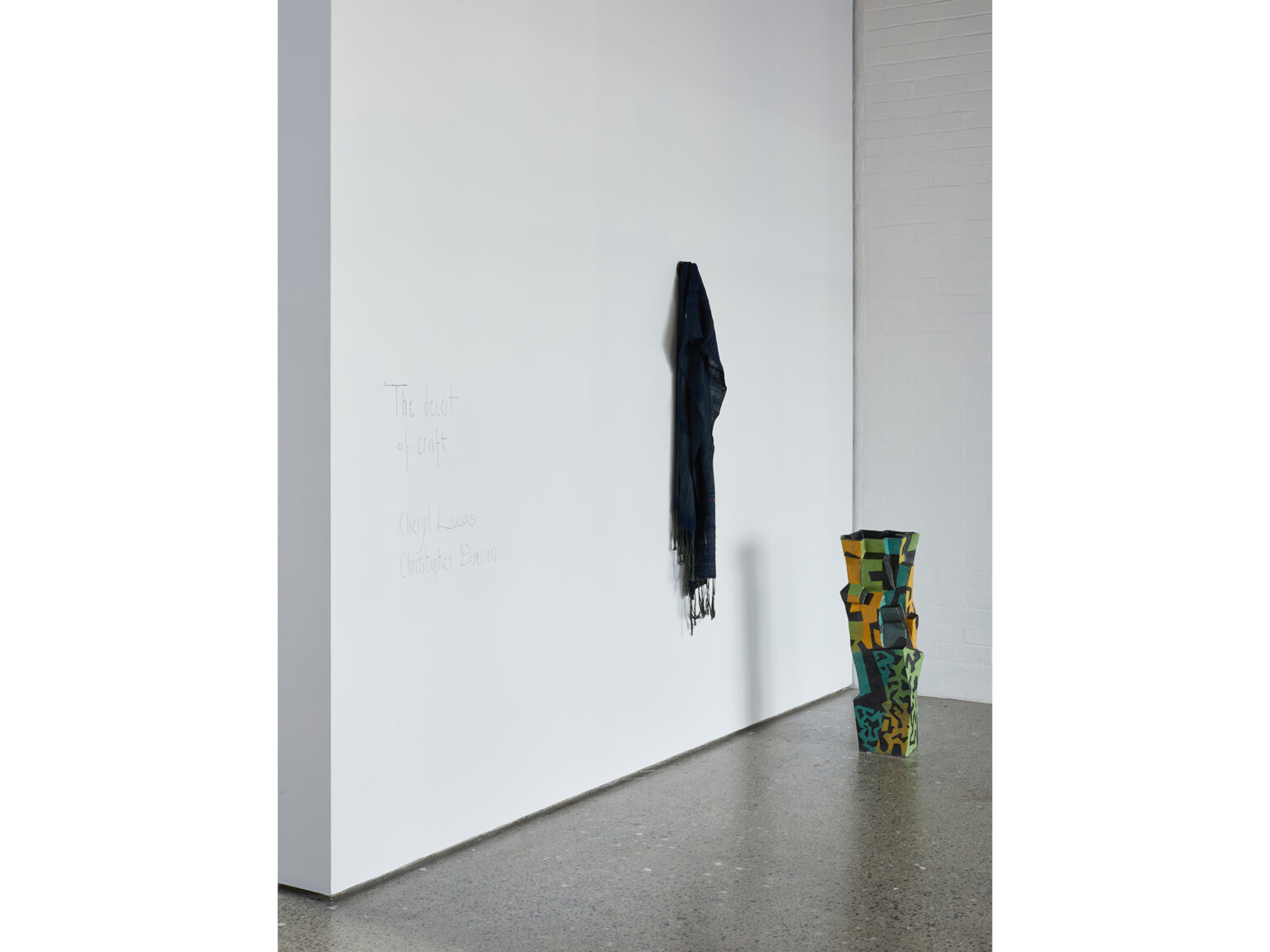
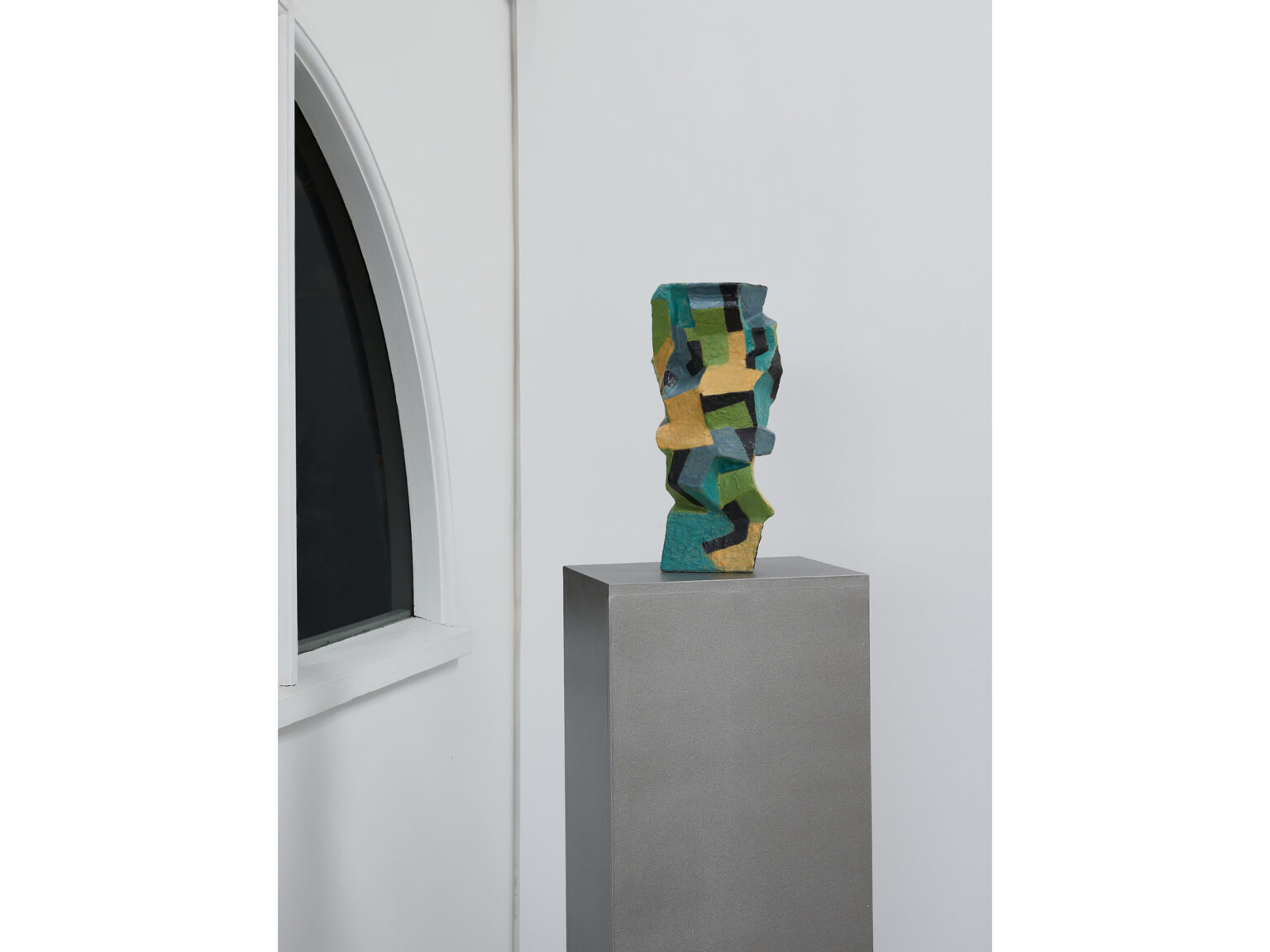
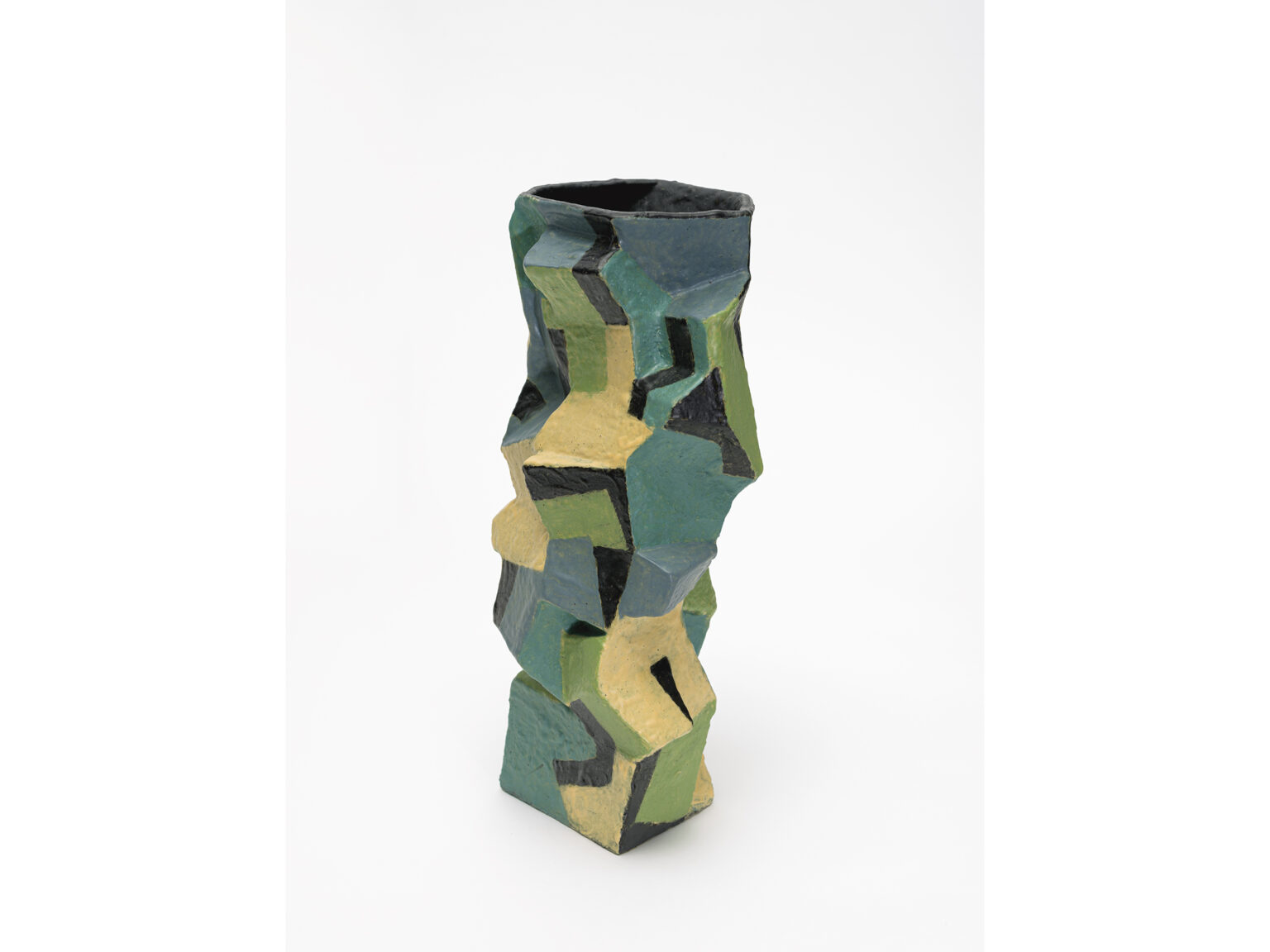
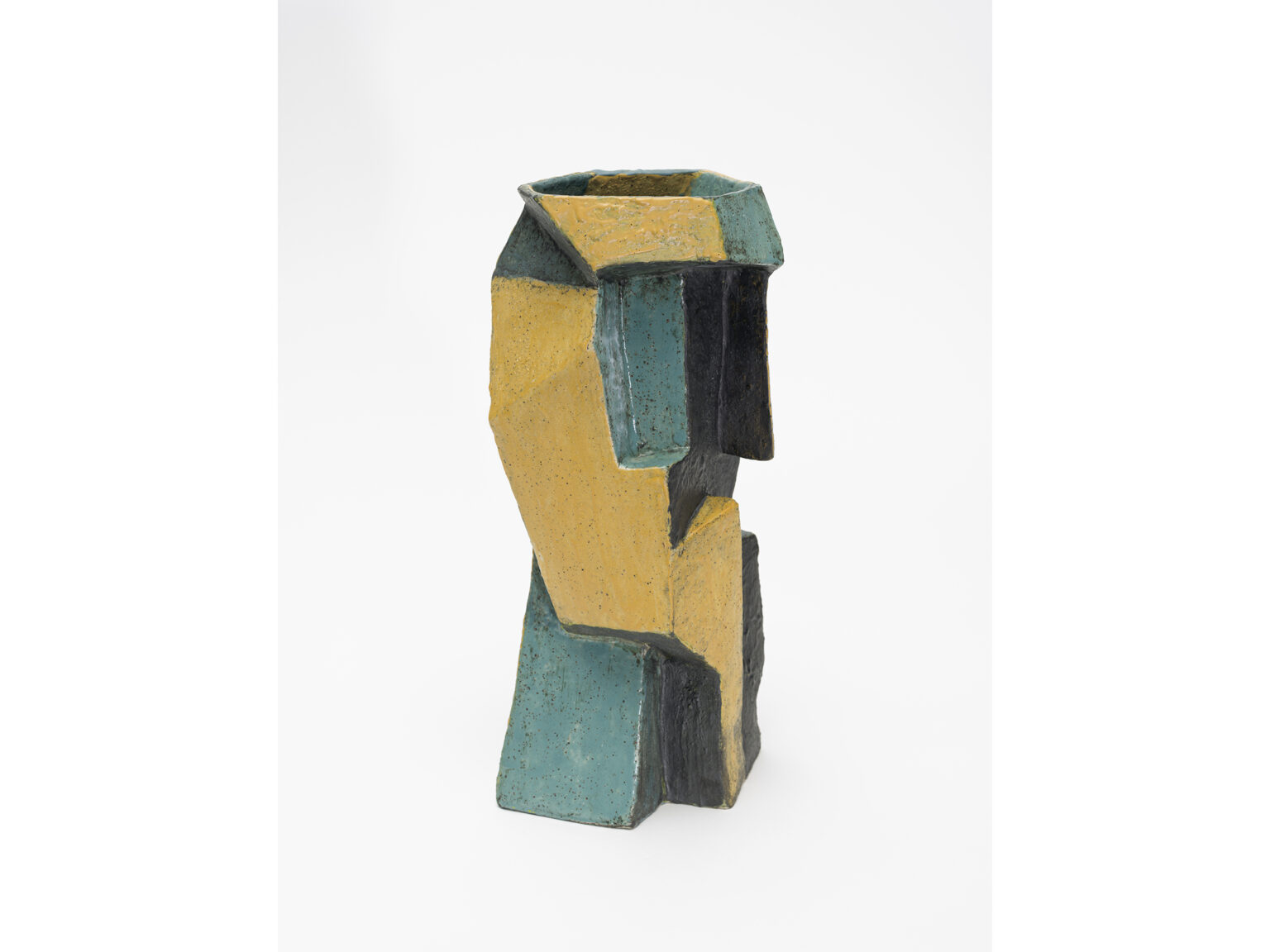
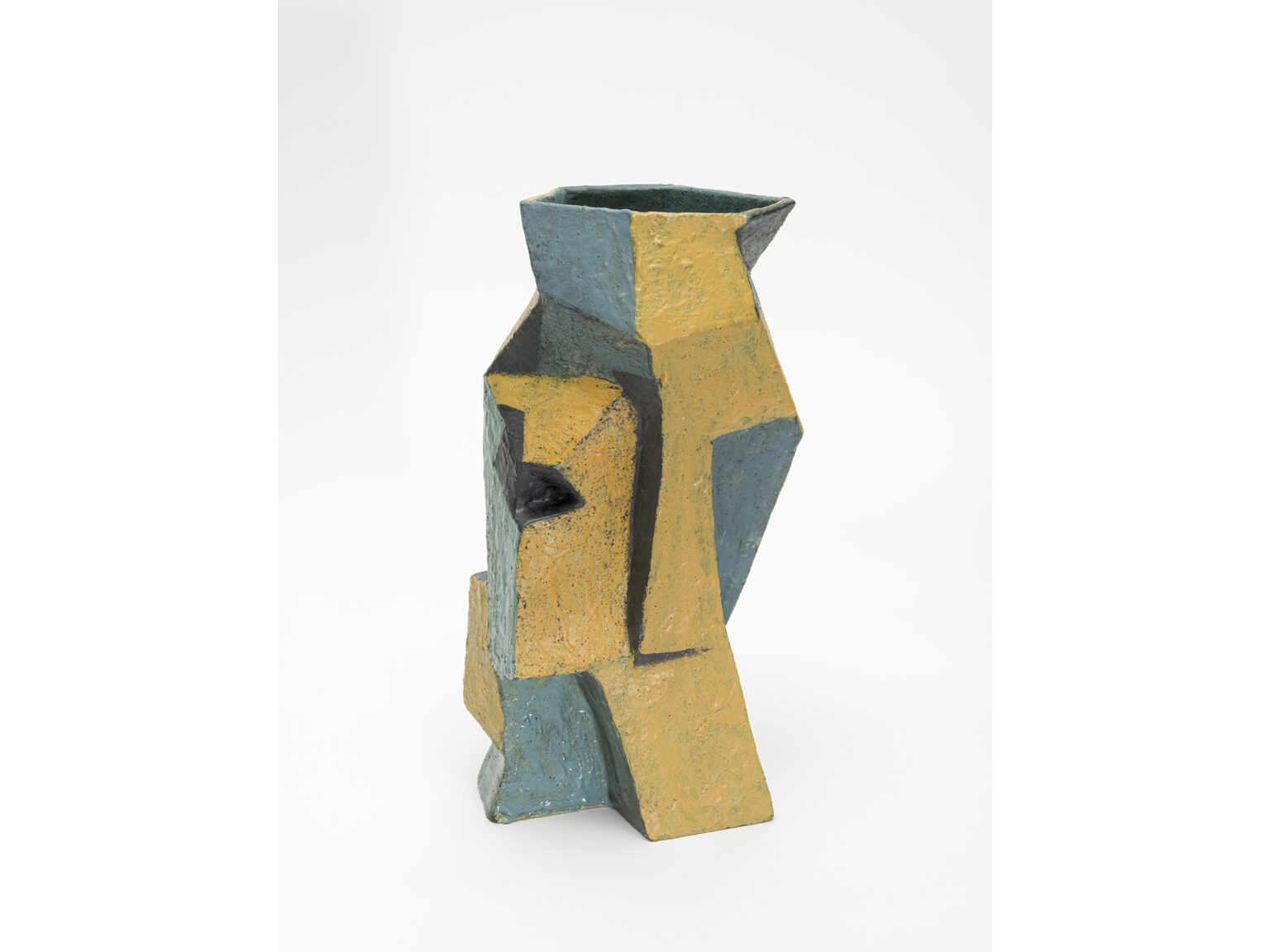
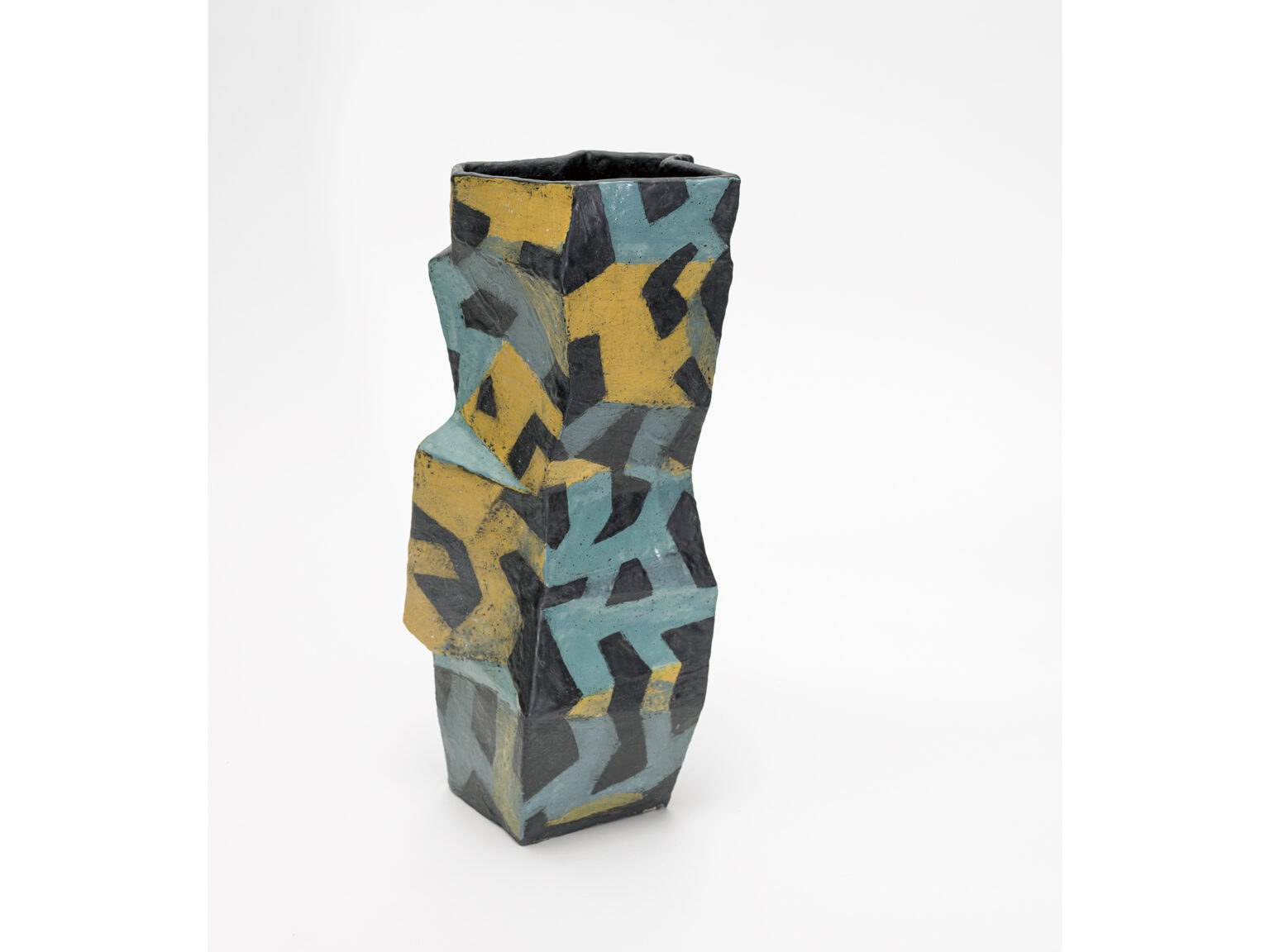
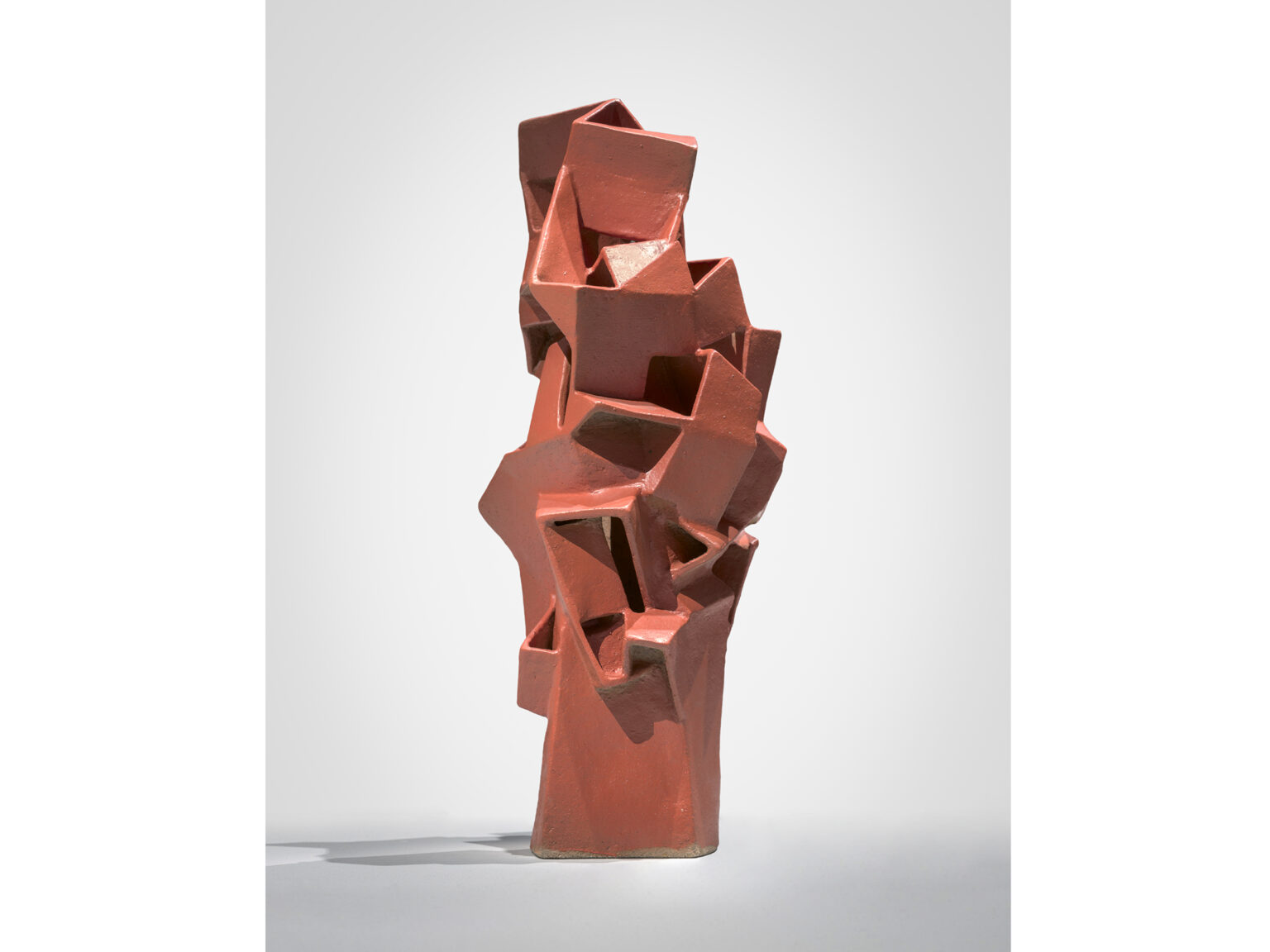
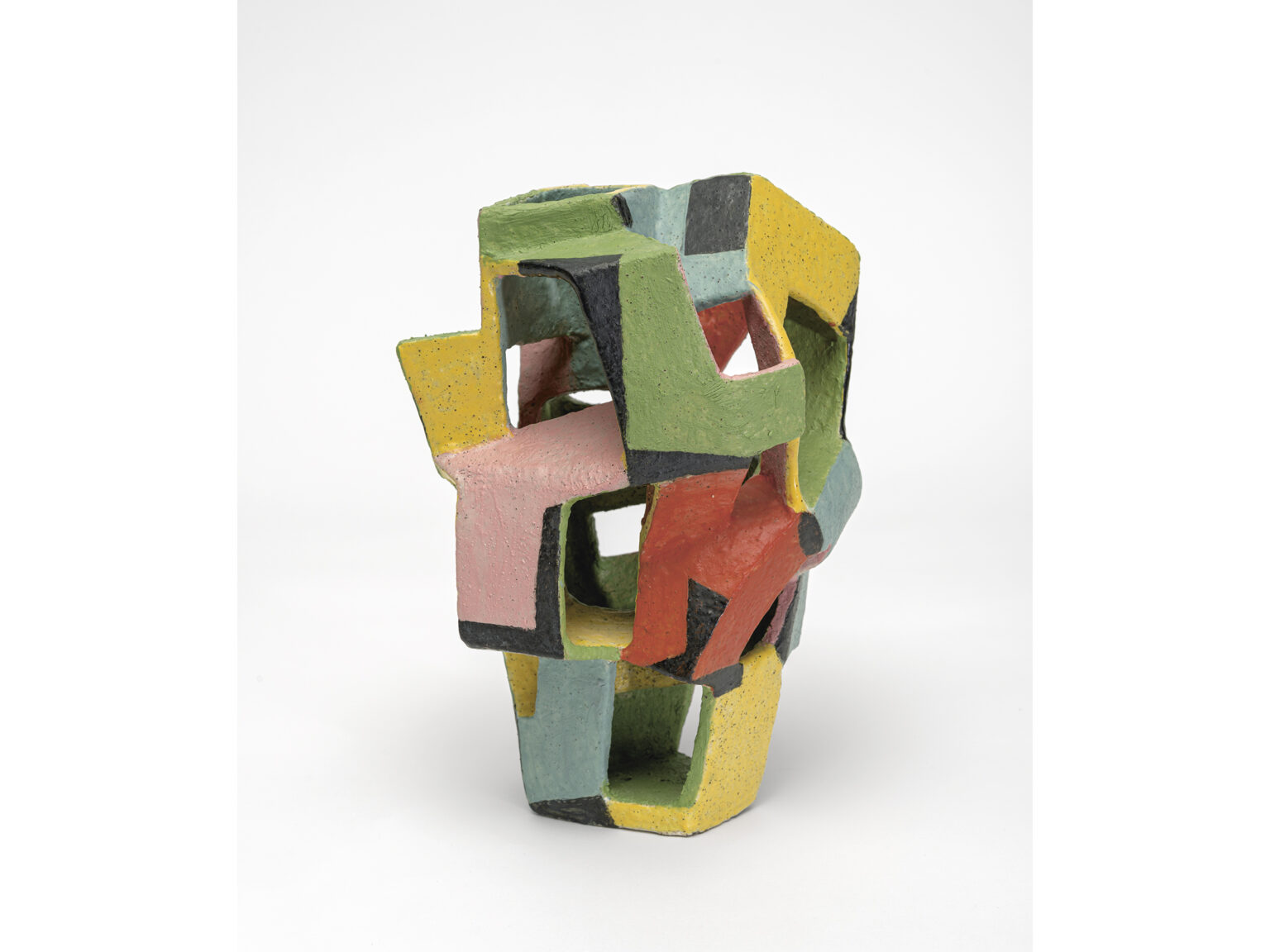
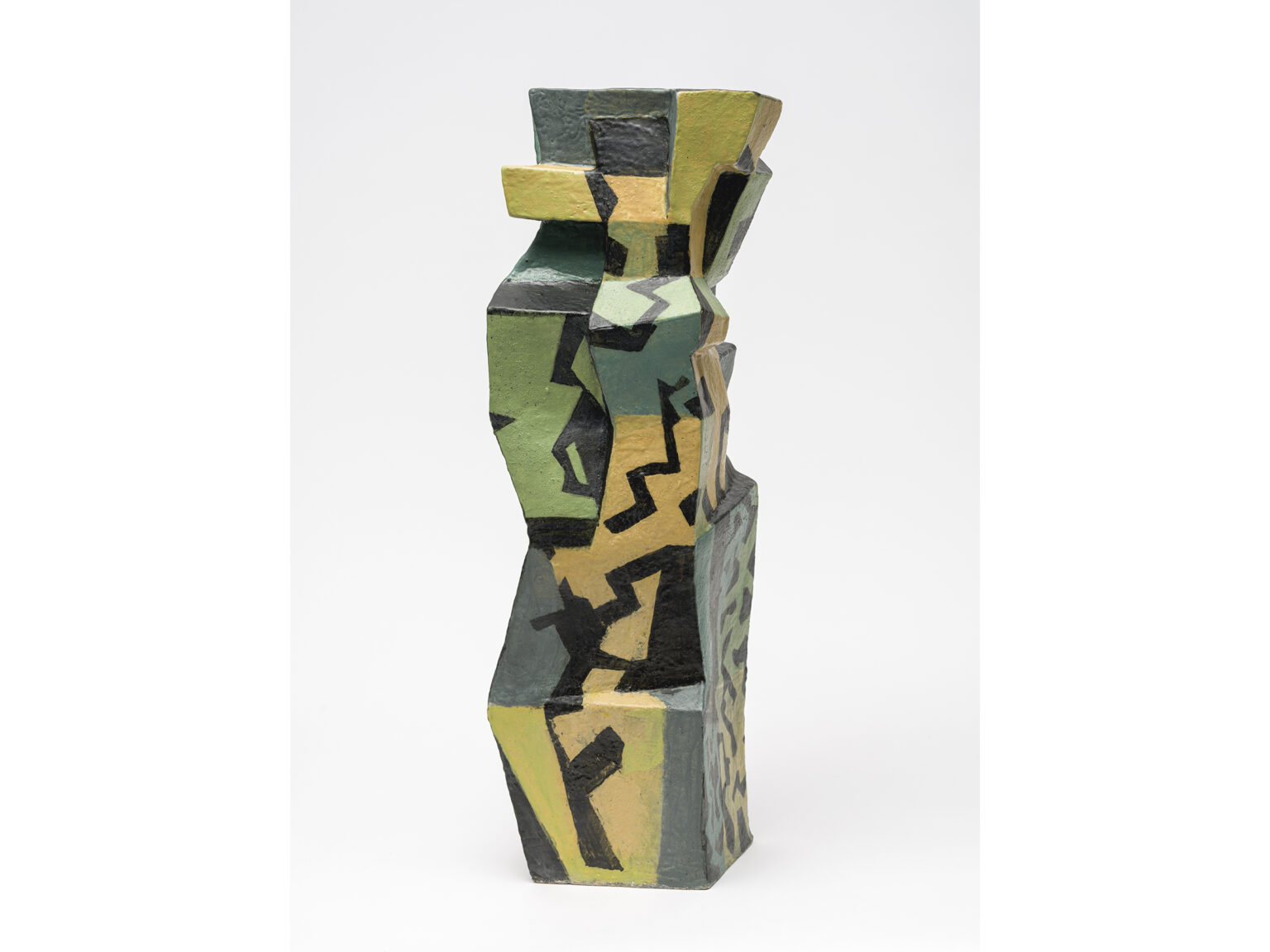


1 / 24
Cheryl Lucas & Christopher Duncan
The deceit of craft
Installation view
$POA | ENQUIRE
2 / 24
Cheryl Lucas & Christopher Duncan
The deceit of craft
Installation view
$POA | ENQUIRE
3 / 24
Christopher Duncan
The deceit of craft
Temple IV
Scarf, 2023
Cotton, linen, silk
2030 x 480mm
$1900 | SOLD
4 / 24
Christopher Duncan
The deceit of craft
Temple IV (detail)
Scarf, 2023
Cotton, linen, silk
2030 x 480mm
$1900 | SOLD
5 / 24
Christopher Duncan
The deceit of craft
Temple IV (detail)
Scarf, 2023
Cotton, linen, silk
2030 x 480mm
$1900 | SOLD
6 / 24
Christopher Duncan
The deceit of craft
Temple IV
Scarf, 2023
Cotton, linen, silk
2030 x 480mm
$1900 | SOLD
7 / 24
Cheryl Lucas & Christopher Duncan
The deceit of craft
Installation view
$POA | ENQUIRE
8 / 24
Cheryl Lucas & Christopher Duncan
The deceit of craft
Installation view
$POA | ENQUIRE
9 / 24
Cheryl Lucas & Christopher Duncan
The deceit of craft
Installation view
$POA | ENQUIRE
10 / 24
Christopher Duncan
The deceit of craft
Temple VI
Scarf, 2023
Cotton, merino, possum, linen
2140 x 470mm
$1900 | SOLD
11 / 24
Christopher Duncan
The deceit of craft
Elephant VII
Shawl, 2023
Cotton, antique Japanese cotton, linen, silk, muka
2480 x 900mm
$2500 | SOLD
12 / 24
Christopher Duncan
The deceit of craft
Elephant VII (detail)
Shawl, 2023
Cotton, antique Japanese cotton, linen, silk, muka
2480 x 900mm
$2500 | SOLD
13 / 24
Cheryl Lucas & Christopher Duncan
The deceit of craft
Installation view
$POA | ENQUIRE
14 / 24
Cheryl Lucas & Christopher Duncan
The deceit of craft
Installation view
$POA | ENQUIRE
15 / 24
Cheryl Lucas & Christopher Duncan
The deceit of craft
Installation view
$POA | ENQUIRE
16 / 24
Cheryl Lucas & Christopher Duncan
The deceit of craft
Installation view
$POA | ENQUIRE
17 / 24
Cheryl Lucas
The deceit of craft
Subterfuge 1
2022
Multi-fired ceramic
430 x 215 x 175mm
$POA | ENQUIRE
18 / 24
Cheryl Lucas
The deceit of craft
Subterfuge 1
2022
Multi-fired ceramic
430 x 215 x 175mm
$5500 | ENQUIRE
19 / 24
Cheryl Lucas
The deceit of craft
Subterfuge 5
2022
Multi-fired ceramic
385 x 190 x 155mm
$4500 | SOLD
20 / 24
Cheryl Lucas
The deceit of craft
Subterfuge 5
2022
Multi-fired ceramic
385 x 190 x 155mm
$4500 | SOLD
21 / 24
Cheryl Lucas
The deceit of craft
Subterfuge 7
2022
Multi-fired ceramic
405 x 205 x 205mm
$4500 | ENQUIRE
22 / 24
Cheryl Lucas
The deceit of craft
Subterfuge 15
2022
Multi-fired ceramic
630 x 260 x 240mm
$8500 | SOLD
23 / 24
Cheryl Lucas
The deceit of craft
Subterfuge 3
2022
Multi-fired ceramic
340 x 255 x 220mm
$POA | SOLD
24 / 24
Cheryl Lucas
The deceit of craft
Subterfuge 10
2022
Multi-fired ceramic
790 x 330 x 325mm
$8500 | ENQUIRE
The deceit of craft
Cheryl Lucas & Christopher Duncan
30 May – 24 Jun 2023
Kinship in people, solace in places
When we moved into our first suburban home (out of the city we loved), one of the seedlings we planted to help us claim our garden was a shrubby tororaro. A staple in the backyards, public spaces and untamed stretches of Aotearoa, for years prior I had been drawn to the haphazard zigzag of this bush, which maintains a satisfactory architecture in spite of itself.
This plant belongs to an endemic group that divaricate, or branch at wide angles, as a form of self-preservation. These, serve as structural starting point for Cheryl Lucas’ Subterfuge series and their brutalist composition. Stained in awa blues, dusty ochres and blood reds, they embody her childhood memories in Central Otago, where crisp light undercuts the bleak realities of farming with the wildness inherent in the land.
While more commonly wrestled down by synonyms like deceit, subterfuge is also about evading a consequence. Here, Lucas connects the survival of plants like the shrubby tororaro with her own responses to environments that are both nurturing and harsh—bustled against our uncertain time—where the earth fights back, unbelievable wars continue, and sickness still consumes us.
Lucas’ organically structured ceramics inhabit The National alongside the graceful weavings of Christopher Duncan. Reflecting on the pairing, he writes “I’ve always been interested by the long relationship that ceramics and cloth have had with humanity. These two practices have been with us through many of our major changes, disruptions, innovations and upheavals. On a domestic level they have helped us survive day to day.”
Duncan’s pieces continue his Elephant and Temple series. Their story coalesce with his grandmothers, who each gifted him an elephant figurine on their death. Over and above familial nostalgia, this animal has come to invoke a wider cross-cultural opulence and divinity for the artist. I think of Ganesha, the elephant deity—remover of obstacles.
You can see these mystical-like qualities in a shawl made with a rich wine-coloured warp yarn, that appears red or blue depending on how the garment moves with its body. This duality is reflected in the painstaking process of hand-making a garment that co-exists as both luxury and necessity, lamenting our milieu, where spirituality and capitalism are uncomfortably mistaken for each other.
Together, Lucas and Duncan’s works are equal parts cautionary and optimistic. In a deceptive contrast of hard angles and tumbling curves, their labours speak to finding comfort in discomfort— consciously seeking kinship in the people we connect with, and solace in the places we find ourselves in.
Six years after moving in, our home that once felt so foreign now lives with us. In it, we have become part of a community, birthed a baby, survived a pandemic. The shrubby tororaro is thriving, and so dense, it needs to be regularly trimmed to avoid engulfing the Camelia next to it. Somehow, my toddler manages to disappear into it when we play hide and seek, gleefully shrieking in anticipation over what will happen next.
Sian van Dyk, 2023
